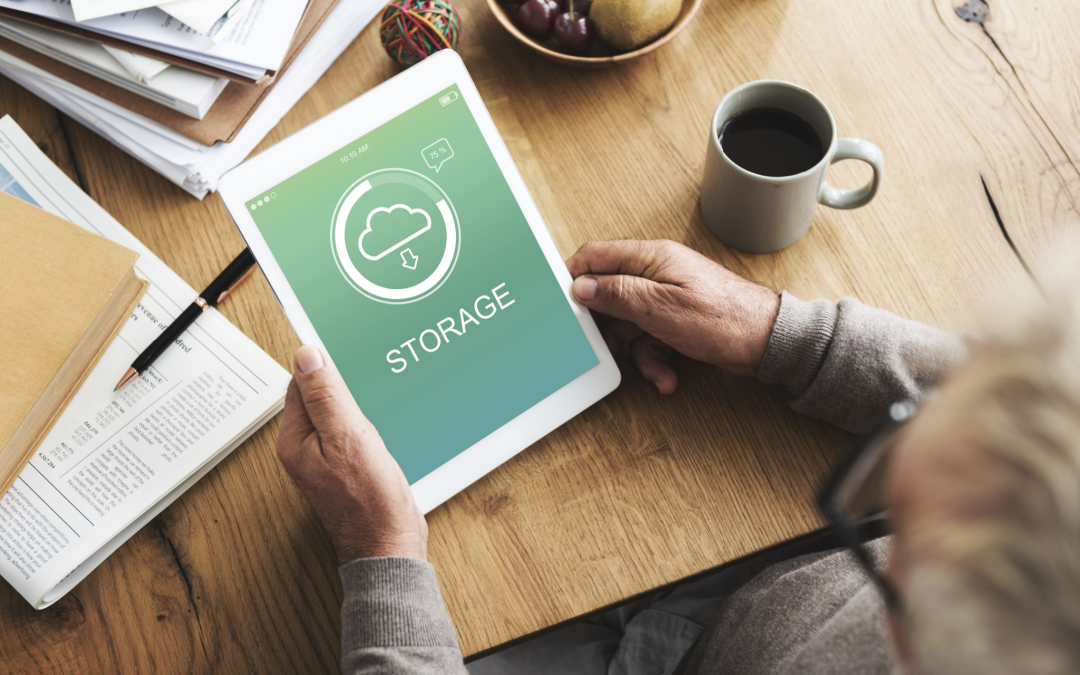Since transitioning to a partial (or even fully) work-from-home office culture over the last few years, many companies are relying more than ever on cloud storage solutions to keep their teams connected.
These solutions offer powerful benefits in affordability, scalability, and convenience. But there’s also risk in migrating your sensitive data to the cloud.
This is the moment in literally every action or spy movie where you get the briefing for the mission. It makes sense on paper (and cloud computing certainly does), but something makes you ask, “What else should you be telling me?”
In the movies, the response is always, “You’re on a need-to-know basis.” Well, you need to know, so here are some key points to keep in mind and 7 practical action steps to take. This knowledge will keep you on the right path when migrating your sensitive data to a cloud storage solution.
Recognize Your New Privacy Paradigm
Protection of your critical, confidential information is easy enough to maintain when your data is stored on-site, but how well-protected is it in the cloud? When your data is stored elsewhere, it’s tough to know how secure it really is. When storing your important and sensitive data in the cloud, be aware that essential privacy controls may be out of your hands and in the hands of your service provider.
Action Item #1: It’s crucial that you train your employees on the do’s and don’ts of security in your new WFH environment.
Understand the Risks of Shared Servers
Many people say their data is stored “in the cloud” as opposed to “on a server,” but that’s not totally accurate. Servers are still used to hold data in cloud-based storage. They’re just not accessed physically by users. Since cloud storage providers aren’t building-specific servers for each user; the server space is shared among different users as needed. There’s a chance your data could be at risk if others using your servers upload sketchy information.
Action Item #2: Ask your cloud service provider what precautions are in place to protect you on a shared server.
Check for a Potential Lack of Built-In Backup Services
A huge drawback to some cloud storage systems is the absence of automatic backup functionality. In other words, it’s up to you to make backups of whatever data you store on the cloud. This isn’t the case with every provider, but it’s a question you need to ask. Some cloud services do provide backups, but those that don’t leave you vulnerable to data loss.
Action Item #3: Be sure you’re clear on the backup capabilities of your service.
Prevent Leaked Data
It’s a no-brainer that one of the main goals in securing your confidential data is to keep it under wraps from anyone outside of your company. That means making sure outsiders can’t get to it and that it doesn’t get sent to anyone outside of your own team. If either of these missions fails, you’re at risk of exposing private and crucial data to outsiders. Even if you’re careful to ensure your team isn’t able to expose your data, there’s a chance your storage provider could inadvertently leak your data to the wrong person.
Action Item #4: You need crystal clear policies and permissions established for who has access to what.
Examine Your Storage Gateways and APIs
Some companies utilize storage gateways or cloud storage APIs to help migrate data to the cloud. While these “middlemen” may help your team get to and manage the information on your cloud, an insecure gateway or API can cause a serious amount of damage to your data. You want to be sure you have clear policies and protocols in place for security features like authentication, authorization, and traffic management.
Action Item #5: Be sure to thoroughly establish security protocols for the Gateway or API tools you choose.
Realize You’re Not in Complete Control
There’s a level of relief that comes with using a third party to store data for you. It’s great to take that task off your already jammed to-do list, but there’s also a level of risk. If there are unexpected issues with your storage provider, you’ll need to rely on them to save the day. So, if an event impacts your ability to reach important data, like malware infection or an outage, you have to wait for your provider to address the issue on their own timeline. The longer your data is unprotected, the more at-risk it is.
Action Item #6: Make sure you quiz providers on their response times for crisis control.
Look Out for Rogue Devices
We’ve spent a lot of time discussing risks that can come from storage providers, but they’re not the only source of risk for your data. The devices accessing your data themselves are also a source of potential peril. There’s been an increase over the last few years in a BYOD (Bring Your Own Device) model, which is convenient, but it also means that more worker-owned devices are connected to your storage provider, posing potential security risks. Workers may sometimes even use an unregistered “shadow” device to access your data storage, which is never a wise choice.
Action Item #7: Develop policies and provide the right training and tools for employees to use the BYOD model safely.
Find Peace of Mind for Cloud Security with Expert Guidance
Before joining the cloud revolution, let our experts at Inteleca evaluate your data needs and design a secure infrastructure plan for your WFH business model. Contact us here, to talk with one of our engineers about your unique business needs, and we’ll walk you through the best options for your goals.



